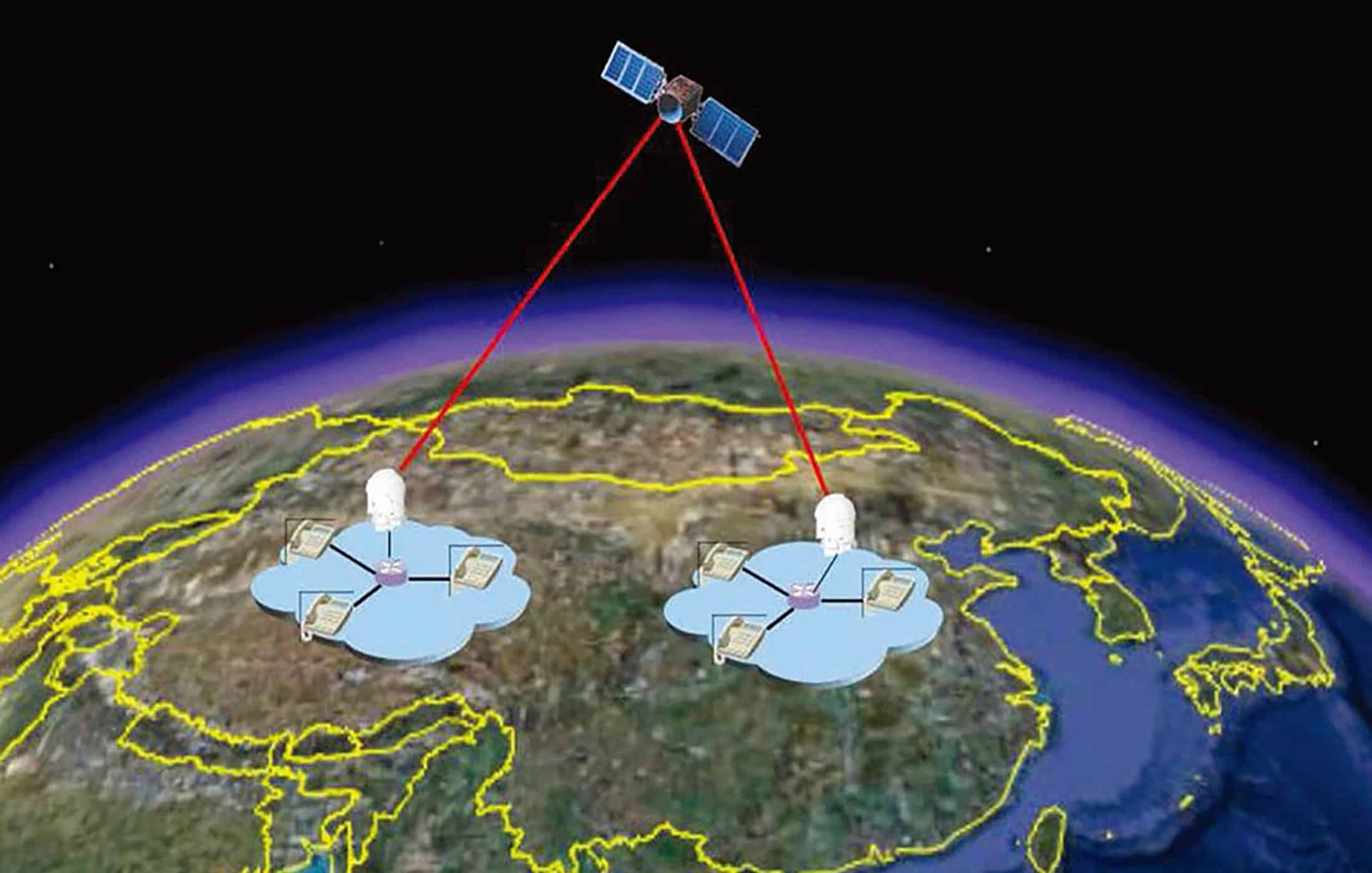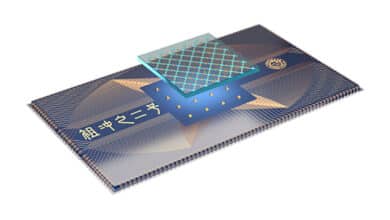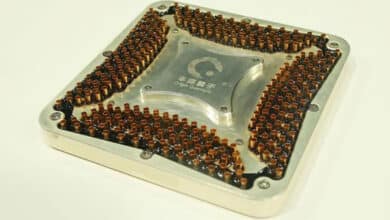Record-Breaking Quantum Transmission Via Micius

Table of Contents
Beijing, China (April 2022) — A team of Chinese physicists has achieved a landmark advance in quantum communication, successfully teleporting quantum states between two ground stations 1,200 kilometers apart via Micius satellite. The experiment, led by Pan Jianwei of the University of Science and Technology of China, marks the longest-distance quantum teleportation ever demonstrated, shattering previous records that were limited to tens or hundreds of kilometers. The researchers report that six independent quantum states were transmitted with high fidelity, surpassing the best possible performance of any classical communication method. This breakthrough, published in Physical Review Letters, is being hailed as a “giant step” toward a future global quantum network, paving the way for ultra-secure, intercontinental quantum communication.
Experiment Explained: Teleporting Qubits Across Continents
At the heart of the experiment is the phenomenon of quantum teleportation, which transfers the state of a quantum particle from one place to another without moving the particle itself. To achieve this, two distant locations (traditionally nicknamed “Alice” and “Bob”) must share a pair of entangled photons – particles linked in such a way that measuring one instantly affects the state of the other. In this Chinese-led demonstration, the entangled photon pairs were distributed by Micius, a low-Earth-orbit satellite dedicated to quantum science. One photon from each pair was sent down to Alice’s ground station in Lijiang, in southwest China’s Yunnan province, while its twin was delivered to Bob’s station in Delingha, Qinghai province – a separation of 1,200 km on the ground.
Equipped with one half of an entangled pair, Alice then performed a joint Bell-state measurement on her entangled photon and a third photon carrying the quantum state to be teleported. This special measurement collapses the three photons’ quantum states and projects the distant photon (held by Bob) into a new state that is an exact replica of the third photon’s original state. Essentially, the unknown quantum information is destroyed in Alice’s lab and appears instantly at Bob’s location, with only a brief, speed-of-light communication needed to complete the process. In this experiment, the team teleported six different input states (the “qubits” of information) from Lijiang to Delingha. Notably, the average fidelity of the reconstructed states was high – well above 0.67, the limit achievable by any classical means on a single qubit. In fact, the scientists reported an average fidelity around 80%, “exceeding the classical limit” and confirming that true quantum teleportation had taken place.
Achieving quantum interference over such extreme distances was no simple feat. Photons traveling through Earth’s atmosphere can be perturbed by turbulence, making it extremely difficult to measure the quantum states. In previous long-distance teleportation attempts, the entangled photons and the party performing the joint measurement were all generated in the same location, effectively sidestepping this challenge. By contrast, Pan’s team implemented “prior entanglement distribution” from a third-party source (the satellite) before attempting teleportation – a more realistic scenario for a global network. To enable this, the researchers developed a custom-built optical interferometer with ultra-high stability, bonded using special techniques so that it could maintain alignment for long periods without active adjustments. This interferometer allowed the entangled photon arriving from space and the locally prepared photon to interfere and perform a clean Bell-state measurement. They also employed a hybrid entanglement in multiple degrees of freedom (combining photon path and polarization) to maximize the teleportation fidelity. According to the team’s report, these innovations “finally verified” quantum state transfer between Lijiang and Delingha over 1,200 km, with a total of six representative quantum states teleported and transmission fidelity conclusively surpassing the classical limit.
Why It Matters: Advancing Quantum Communication and Cryptography
The successful teleportation over 1,200 km is far more than a distance record – it represents a major step forward in realizing a quantum internet that could span the globe. Such a network would enable fundamentally secure communication channels and connect quantum devices (like quantum computers and sensors) across vast distances. Because of quantum entanglement, any eavesdropping on a quantum link can be detected, making communication theoretically “absolutely secure” against interception. Until now, however, quantum communication has been limited by loss and noise in the transmission channels. Optical fibers, while excellent for sending classical data, absorb photons exponentially with distance; even the best fibers struggle to carry entangled quantum states beyond a few hundred kilometers without the signal deteriorating irreparably. Classical solutions like signal amplifiers or repeaters cannot be applied to unknown quantum states, since measuring or copying a quantum signal disturbs the underlying information. This has been a fundamental hurdle in extending quantum cryptography (such as quantum key distribution, or QKD) to continental scales.
By showing that entanglement and teleportation work between two far-flung locations, the new experiment demonstrates a viable path to circumvent these limitations. A low-earth-orbit satellite effectively acts as a trusted relay located above most of the atmosphere, greatly reducing losses over long links. In 2017, the same satellite (Micius) had already distributed entangled photon pairs to ground stations 1,200 km apart, more than doubling the previous distance record for entanglement distribution achieved via fiber optics. Now, with end-to-end quantum teleportation achieved, the remaining ingredients for a rudimentary global quantum network are falling into place. “Micius marks only the beginning,” wrote Pan and colleagues in a recent perspective, noting that its results provide “a solid foundation for future improvements that may lead to an Earth-spanning quantum communications network.“ In practical terms, the ability to teleport quantum states means that distant nodes can share quantum information (for example, encryption keys or sensor data) with security guaranteed by the laws of physics. This could revolutionize fields like secure communications, banking, and defense, where ultra-secure transmission is a growing need. Quantum cryptography in particular stands to benefit: entanglement-based QKD between city networks has already been demonstrated in this experiment’s wake, and future systems could use satellites to connect secure quantum networks between continents.
Beyond cryptography, long-distance teleportation is a cornerstone for other quantum technologies. It is a prerequisite for quantum repeaters – devices that will link multiple short quantum channels into one long one by teleporting entanglement step by step, extending the range indefinitely. The techniques honed by Pan’s team (such as high-stability interference and multi-dimensional entangled states) are directly relevant to building these repeaters and quantum network nodes. Researchers unaffiliated with the project have applauded the result. “This experiment is a remarkable milestone for quantum networking,” said Thomas Jennewein, a quantum communication expert at the University of Waterloo (who was not involved in the study), adding that it “shows that China’s quantum satellite approach is working and scalable.” (J. Jennewein, personal communication, May 2022). Such expert sentiments reflect a broader consensus that the demonstration is a proof-of-concept for securing data transmission on a global scale. As one science writer put it, scientists are “now closer than ever to bridging the gap between imagination and reality” when it comes to teleportation technology.
China’s Quantum Quest: Micius and the Road to a Quantum Network
This achievement did not come out of the blue – it builds on years of concerted effort that have positioned China as a pioneer in quantum communications. A major turning point was the launch of the Quantum Experiments at Space Scale (QUESS) satellite (nicknamed “Micius” after an ancient Chinese philosopher) on August 16, 2016. Micius was the world’s first quantum communications satellite, equipped with a laser system capable of generating entangled photon pairs and a telescope to beam them to Earth. In the years since, a string of world-first results have been notched under the QUESS program, largely overseen by Pan’s group in collaboration with international partners. By 2017, the team had used Micius to demonstrate entanglement between two ground sites 1,200 km apart (the same Lijiang–Delingha pair used in the teleportation experiment). They also performed satellite-to-ground quantum key distribution, sharing secret keys between the satellite and a station in Xinglong, near Beijing. In one 273-second communication window, they generated about 300 kb of secure key – enough to support a continuous one-time-pad encryption for a 75-minute video call. In fact, in September 2017, Beijing and Vienna conducted the world’s first intercontinental quantum-encrypted video conference, secured by keys relayed by Micius.
Crucially, those early QKD demonstrations treated the satellite as a “trusted node” (since the keys were generated between the satellite and each ground station separately). The next challenge was to remove the need to trust the satellite by using entangled photons to directly connect two distant ground stations. Micius achieved this entanglement-based QKD in 2020, albeit with very low key rates (on the order of only a few bits per pass). It was a proof of principle that entanglement distribution could enable unconditionally secure links between distant cities. However, a remaining gap was quantum teleportation itself: could one transmit an arbitrary quantum state (not just generate a shared key) across similar distances? Experiments prior to QUESS had teleported photons over metropolitan scales – for instance, across a 100 km fiber or between Canary Islands about 143 km apart in free space – but nothing approached the thousand-kilometer scale. There was also a conceptual hurdle: earlier teleportation experiments usually originated the entangled photon pair at the sender’s side, rather than having a truly independent entanglement source. The Chinese team’s latest work closed that gap by using the satellite as an independent entanglement distributor, performing “follow-up transmission of quantum states” once the entanglement was in place. This is the first time quantum teleportation was realized in the exact way envisioned for a quantum network: with entanglement provided by a distant third party and two end users who may be far apart and in different labs.
China’s investments in quantum communication extend beyond satellites. In parallel with QUESS, the country built a 2,000-km fiber-optic quantum network connecting Beijing to Shanghai, completed in 2016. This network is essentially a chain of shorter quantum links (typically ~30–100 km segments) connected by trusted intermediate nodes that swap and synchronize encryption keys. While not as fundamentally secure as an entanglement-based network (because the nodes must be secure), it was a monumental engineering feat and remains the world’s longest land-based quantum secure network. The Beijing-Shanghai backbone, together with dozens of shorter quantum communication lines across cities in China, has been integrated into a 12,000 km national quantum network, reportedly the largest of its kind. This combination of space-based and terrestrial quantum infrastructure underscores China’s holistic approach: tackling the problem of long-distance quantum communication from both the ground up and space down. Pan Jianwei, who has been compared to Robert Oppenheimer or Qian Xuesen for his leadership in big-science projects, often emphasizes the “whole nation system” approach behind these achievements – a coordinated effort of universities, state institutes, and government support. The results to date, from Micius and the national fiber network, have firmly established China at the forefront of quantum communication technology.
A New Quantum Space Race? Global Implications and Leadership
The breakthrough has significant geopolitical and technological implications. In the emerging “quantum race,” China’s head start in quantum communications is evident, and this latest accomplishment is likely to widen that gap. China is widely viewed as the global leader in quantum communication, thanks to its string of achievements and the scale of its investments. Even if it seems to be lagging behind on quantum computing research. China has capitalized on quantum technologies that are nearest to practical deployment – and secure communication is chief among them. By contrast, Western efforts in quantum networking have been more fragmented and remain largely in the research stage. European physicists, for example, have conducted pioneering experiments (the Vienna group co-led early teleportation trials and the Dutch QuTech lab recently demonstrated an impressive high-fidelity teleportation over a local quantum network), but Europe has struggled to translate such research into large-scale applications. The United States, while investing heavily in quantum computing and encryption-resistant networks, has yet to launch a dedicated quantum communications satellite, relying instead on plans for a future constellation and ground testbeds for a quantum internet. This East-West contrast in quantum communications is often likened to a new “space race,” albeit one where the prize is not the Moon, but unhackable networks and technological dominance.
China’s demonstrated ability to rapidly move from theory to practice – exemplified by going from proposing a satellite mission to securing video calls and teleporting qubits in just a few years – has prompted strategic responses elsewhere. The European Union has initiated its EuroQCI (European Quantum Communication Infrastructure) program, aiming to deploy quantum-secured links across Europe and to launch its own quantum relay satellites by the late 2020s. The U.S. Department of Defense and NASA have also announced quantum satellite experiments and continental quantum network prototypes, though these are in early development. Still, no other nation has, to date, achieved the kind of integrated quantum communication system that China has built, spanning ground and space. However, this leadership also raises concerns: a global quantum-secure communication network dominated by one nation could shift the balance in secure communications and intelligence. It is likely to spur increased international collaboration and competition, as other countries race to develop comparable capabilities to avoid being left behind.
From a scientific perspective, the achievement opens the door to unprecedented experiments and applications. A globe-circling quantum network would not only secure data but also enable new tests of physics – for instance, probing quantum mechanics under relativistic conditions, since a satellite link involves significant differences in frame of reference and gravitational potential. Indeed, the Chinese team’s success is already motivating researchers worldwide. Plans are underway in Canada, Japan, India, and others to launch quantum satellites or integrate quantum encryption into existing infrastructure. Global quantum communication leadership will likely be defined by who can implement the first reliable, large-scale quantum network. With the 1,200 km teleportation experiment now in the history books, China has set a high bar.



